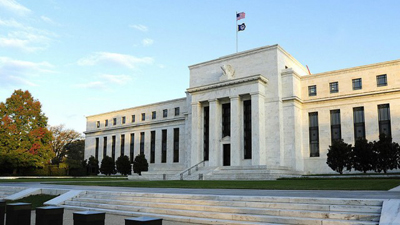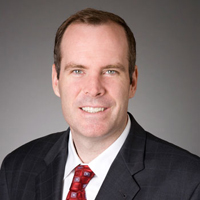Three factors will shake up the Federal Reserve in 2017
Michael Gapen
 Change is coming. Fiscal policy, trade policy, and regulatory policies are all on the table and up for review in the Trump administration. In addition, we foresee significant changes on the horizon for the Federal Reserve and how it conducts monetary policy. Change is coming. Fiscal policy, trade policy, and regulatory policies are all on the table and up for review in the Trump administration. In addition, we foresee significant changes on the horizon for the Federal Reserve and how it conducts monetary policy.
We see these changes at the Federal Reserve as coming on three fronts. The first is the normal rotation of voters within the Federal Open Market Committee, or FOMC.
While all committee members attend and exchange views at the Fed’s policy meeting, a lesser known fact of the way the FOMC operates is that only a subset of the larger group has the authority to vote on monetary policy.
This feature comes from the construction of the Federal Reserve as a hybrid public-private system. The public component consists of governors who sit in residence at the Federal Reserve Board in Washington, D.C. and are appointed by the president and approved by the Senate. There are seven such positions.
The private component consists of 12 regional Federal Reserve banks, headed by a president who is selected by the directors of the bank and subject to the approval of the Federal Reserve Board.
The seven governors plus the president of the Federal Reserve Bank of New York are permanent voting members. They vote at each FOMC meeting, while the remaining reserve bank presidents rotate among four other voting slots. Hence, there are 19 total FOMC participants, but only 12 actual voters at any given meeting.
The rotation of voters among the regional bank presidents could tip the balance in terms of dovish or hawkish policy decisions.
In 2017, several hawkish regional bank presidents rotate off voter status. These include Esther George (Kansas City), Loretta Mester (Cleveland), and Eric Rosengren (Boston).
George and Mester have been consistent in calling for higher short-term interest rates and, over the past year or so, Rosengren has become much more worried about the risk that near-zero interest rates and a large balance sheet are generating excessive risk taking.
All three, in our view, likely see the economic outlook as warranting four one-quarter percent increases in the Fed’s policy rate over the next year. A fourth regional bank president, James Bullard (St. Louis), is also rotating off voter status, but he has been less forceful in calling for tighter policy of late.
These four are being replaced by Charles Evans (Chicago), Neel Kashkari (Minneapolis), Robert Kaplan (Dallas), and Patrick Harker (Philadelphia). Of this group, Evans and Kashkari have made more forceful arguments for normalizing policy slowly, testing the degree to which further labor market improvement can be gained without sparking excessive inflation.
Kaplan and Harker have generally staked out more centrist views and are likely to let the evolving economy dictate their votes. On balance, this suggests that Fed Chair Janet Yellen, a proponent of raising interest rates more slowly, could have more like-minded voters to deal with in the coming year.
The second change is likely to come from fiscal policy. At the Fed’s December meeting, Yellen strongly indicated the Fed does not need expansionary fiscal policy to reach its goals when the economy is already at full employment.
She went on to signal to financial markets that the Fed is not inclined to sit by passively and let a large fiscal stimulus plan cause an undershooting in the unemployment rate and significant overshooting in inflation.
The translation for investors is that the Fed will be raising interest rates should fiscal policy stimulus be forthcoming. This is a change from the past two years, when the Fed was able to raise interest rates only twice.
Finally, the third change we see coming is that President-elect Trump is likely to nominate new members to fill the two vacant slots on the Federal Reserve Board.
Should he use one of these appointments to simultaneously fill the position of Vice Chair of Supervision, which is responsible for overseeing the largest financial institutions, many speculate that Governor Tarullo would step down.
Chair Yellen’s term is also up in early 2018 and Vice Chairman Stanley Fischer’s term is up in mid-2018. Altogether, we see it as very likely that the Trump administration may be able to name three new board governors this year and nominate a new chair and vice chair next year.
What does all this mean? In our view, two things. One, monetary policy will be following fiscal policy for the first time in about a decade.
Stalemates on fiscal policies, a hallmark of the last six years of the Obama administration, are out and action is in. The spotlight has moved to the White House and Congress and off of the Fed.
Two, if you think you understand the Fed’s reaction function in 2018, you are probably wrong. One-third to one-half of the FOMC, including the chair and vice chair, may be new faces. Welcome to the new world.
The views expressed by contributors are their own and not the views of The Hill.
 Mr. Michael Timothy Gapen has been the Chief US Economist at Barclays PLC since November 2014. Mr. Gapen serves as the Managing Director and Head of US Economics Research at Barclays PLC, Research Division. He is responsible for the firm’s outlook for the United States economy and, in particular, United States monetary policy and the impact of financial markets on the economy. Previously, Mr. Gapen served as the Director of U.S. Economic Research and Global Asset Allocation at the firm. Earlier, he was an Asset Allocation Strategist at the firm since January 2012 where Mr. Gapen took on additional responsibility for forming the firm’s asset allocation views and marketing them to clients. He joined the firm as a Senior U.S. Economist in 2010. Mr. Gapen was Section Chief responsible for monetary and financial market analysis at the Board of Governors of the Federal Reserve. In that capacity, he assisted the Board and the FOMC in the formulation of monetary policy and the Federal Reserve’s response to the financial crisis. Prior to this, Mr. Gapen served as a Section Chief at Fed. He has also taught Finance and Economics at institutions including the Kelly School of Business at Indiana University, Mendoza College of Business at Notre Dame, and Johns Hopkins University. Mr. Gapen holds a Ph D in Economics from the Department of Economics at Indiana University. He graduated from Augustana College. Mr. Michael Timothy Gapen has been the Chief US Economist at Barclays PLC since November 2014. Mr. Gapen serves as the Managing Director and Head of US Economics Research at Barclays PLC, Research Division. He is responsible for the firm’s outlook for the United States economy and, in particular, United States monetary policy and the impact of financial markets on the economy. Previously, Mr. Gapen served as the Director of U.S. Economic Research and Global Asset Allocation at the firm. Earlier, he was an Asset Allocation Strategist at the firm since January 2012 where Mr. Gapen took on additional responsibility for forming the firm’s asset allocation views and marketing them to clients. He joined the firm as a Senior U.S. Economist in 2010. Mr. Gapen was Section Chief responsible for monetary and financial market analysis at the Board of Governors of the Federal Reserve. In that capacity, he assisted the Board and the FOMC in the formulation of monetary policy and the Federal Reserve’s response to the financial crisis. Prior to this, Mr. Gapen served as a Section Chief at Fed. He has also taught Finance and Economics at institutions including the Kelly School of Business at Indiana University, Mendoza College of Business at Notre Dame, and Johns Hopkins University. Mr. Gapen holds a Ph D in Economics from the Department of Economics at Indiana University. He graduated from Augustana College.
thehill.com
|




